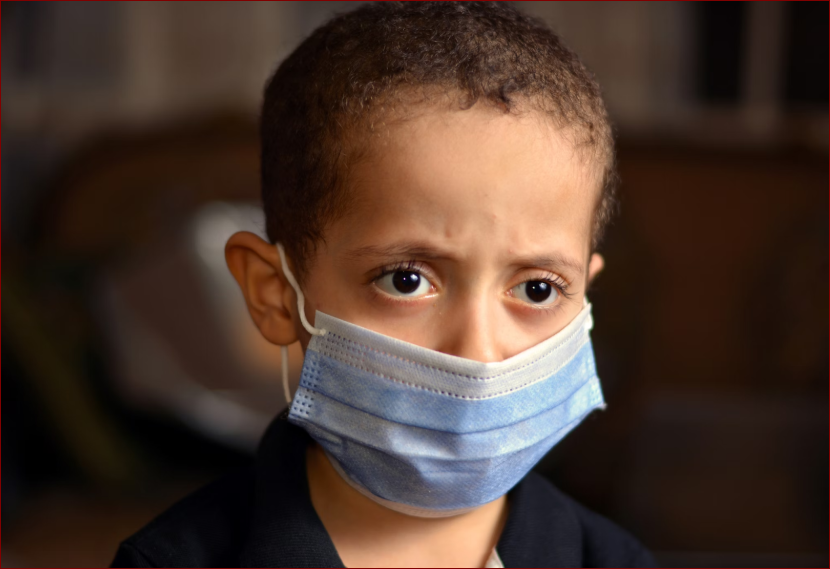The US Centers for Disease Control and Prevention are back in Texas and on the ground for the second time this year. The state has become ground zero for one of the worst measles outbreaks the country has seen in decades.
The Texas Department of State Health Services (DSHS) has officially recognized the outbreak and is reporting statistics. At the time of writing, there have been:
- 597 cases have been confirmed since late January.
- 62 of the patients have been hospitalized over the course of the outbreak.
- There have been two fatalities in school-aged children living in the outbreak area.
One of the fatalities, which was an unvaccinated child, is the first death from measles in the US in a decade. The child died overnight after being hospitalized in Lubbock, northwest Texas.
From healthcare professionals qualified through an ABSN program in Texas to parents of elementary school-aged children, this outbreak is cause for concern for all residents of the state. It’s also a reminder of the value of vaccines.
What caused the outbreak?
According to the BBC, the epicenter of the outbreak was Mennonite, a rural town in western Texas. Experts believe the outbreak could have been caused by low measles vaccination rates.
According to NBC News, measles vaccination rates for young children may be “far lower than publicly reported”. Although measles was once declared “eliminated” in the country, growing anti-vax movements have resulted in this status being put under review.
Measles is one of the most contagious diseases humanity has ever faced, with its recorded history dating as far back as the 9th century. In contrast, measles vaccines are one of mankind’s most valuable inventions, saving over 94 million lives since 1974.
Because of how contagious the virus is, for a place to declare it “eliminated” and have effective herd immunity, it requires a high level of population immunity. For measles, this requires at least a 95% immunization rate.
Unfortunately, in Gaines County—the epicenter—immunization rates have dropped significantly. Data reveals that fewer than 82% of kindergartens are vaccinated against measles.
Research shows that about half of Texas counties have kindergarten immunization rates below the 95% threshold. For example, in Foard County, Texas, less than 67% of children are vaccinated.

Where else has the outbreak spread?
While the outbreak started in Texas, it has rapidly spread to other states. Most recently, a ninth state has been announced to have an active measles outbreak—Montana. A full list of states in the country facing an outbreak includes:
- Texas
- Kansas
- Oklahoma
- Ohio
- Indiana
- Pennsylvania
- Michigan
- Montana
There have also been cases reported in Mexico that the World Health Organization says are linked to the initial Texas outbreak. There have also been reports of a measles outbreak in Ontario, Canada.
What is measles?
Measles, also known as rubeola, is a highly contagious viral illness. The disease is best known for causing a red blotchy rash, but it can lead to other symptoms, including:
- Fever
- Fatigue
- Conjunctivitis
- Runny nose
- Severe cough
Measles usually starts as a flu-like illness and usually lasts for 10-14 days, as long as there are no complications. In severe cases, measles can cause life-threatening complications, like brain inflammation and pneumonia.
The history of measles
Measles has a rich history as an ancient disease, with recorded history dating back over a millennium. We have reports of measles epidemics being reported in Europe as early as the 11th and 12th centuries.
Before the vaccine was developed in 1963 and widespread immunization occurred, measles resulted in approximately 2.6 million deaths every year. There was also a major epidemic occurring worldwide every two to three years.
What causes measles?
The measles virus (genus Morbillivirus) causes measles. It is an airborne disease, which means it spreads whenever someone infected breathes, coughs, sneezes, or talks. While it can affect anyone, it’s most common in children.
The virus infects the person’s respiratory tract (the organs involved in breathing, like the nose, throat, and lungs)and then spreads throughout the rest of the body. While a vaccination exists, there is no treatment or cure for the measles.

Treatment and prevention
First, if you have contracted measles, you are required by law to contact government health authorities. It is a notifiable condition. If you’ve contracted measles, the best advice is to:
- Self-isolate and quarantine
- Get plenty of rest
- Stay hydrated and drink water
- Take paracetamol to combat the fever
- Follow any government health instructions
There is no cure or treatment available, and antibiotics won’t work because the illness is viral. If you or someone you care for is experiencing complications or suspects it’s turned serious, seek further help from a hospital.
You should seek emergency care if you’re experiencing:
- Chest pain or tightness
- Difficulty with breathing
- Light sensitivity
- A severe headache
- Severe vomiting and/or diarrhea
- Cognitive impairment (e.g., confusion)
If you’ve contracted the measles, it’s important to regularly monitor your symptoms and have someone regularly check in on you.
The best prevention for measles is getting the vaccine. Research has shown it is extremely effective at preventing the virus. To be fully protected, you’ll need to get two doses of either:
- The measles, mumps, rubella (MMR) vaccine or;
- The measles, mumps, rubella, and varicella (MMRV) vaccine.
It’s critical to remember to get two doses. Receiving only one dose lowers the effectiveness.
Measles and the United States
According to the Centers for Disease Control and Prevention, before the measles vaccine was developed, the virus was infecting 3 to 4 million people in the US per year. It’s estimated that every year before the decade was made available, it caused around 400-500 deaths.
The measles only became a nationally notifiable condition in the United States in 1912. In the first decade of reporting, there was an average of 6,000 measles-related deaths every year.
The virus has a grim history in the United States, but the vaccine played a major role in reversing death rates. Although it was decades after the vaccine was developed in 1963, the country managed to eliminate measles in 2000.
In this context, ‘eliminated’ refers to the virus (measles) having an absence of continuous spread for more than 12 months. It was a massive achievement for the United States, its public health initiatives, and its highly effective vaccination program.
Unfortunately, this multistate measles outbreak is a dark reminder of how important vaccines are—and not just for measles. So many diseases can be minimized or outright prevented through vaccinations, which is why it’s important to follow public health guidelines and stay up to date with immunizations.
DISCLAIMER – “Views Expressed Disclaimer: This article is not intended to be a substitute for professional medical advice and should not be relied on as health or personal advice. Always seek the guidance of your doctor or other qualified health professional with any questions you may have regarding your health. Views and opinions expressed are those of the authors and do not reflect the official position of any other author, agency, organization, employer or company, including NEO CYMED PUBLISHING LIMITED, which is the publishing company performing under the name Cyprus-Mail…more







Click here to change your cookie preferences